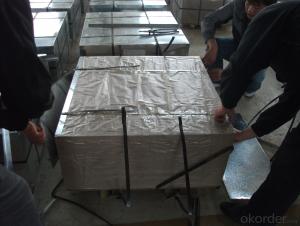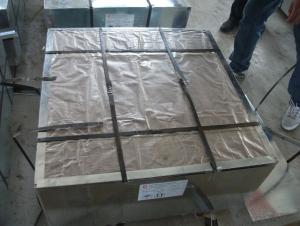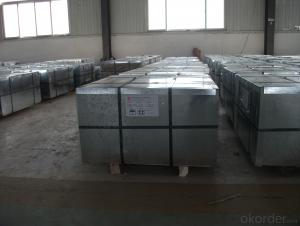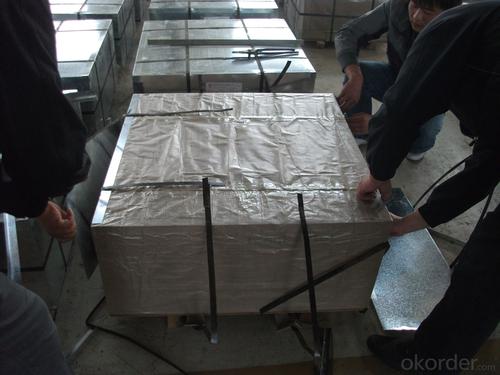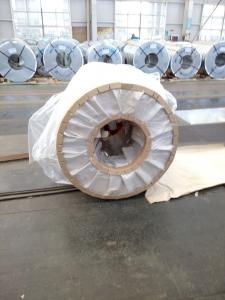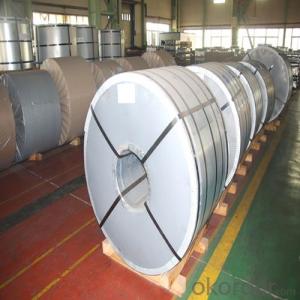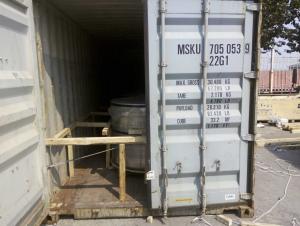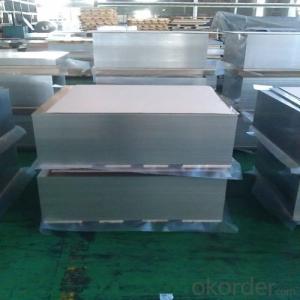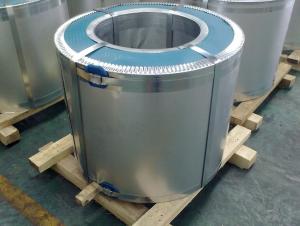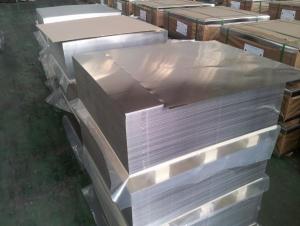Electrolytic Tinplate with MR Steel Material
- Loading Port:
- Qingdao
- Payment Terms:
- TT OR LC
- Min Order Qty:
- 25 m.t.
- Supply Capability:
- 30000 m.t./month
OKorder Service Pledge
OKorder Financial Service
You Might Also Like
1.Structure of Electrolytic Tinplate with MR Steel Material Description
Electrolytic Tinplate is a thin steel sheet coated by tin. It has an extremely beautiful metallic luster as well as excellent properties in corrosion resistance, solder ability, and weld ability.
2.Main Features of the Electrolytic Tinplate with MR Steel Material
Electrolytic Tinplate undoubtedly enjoys the pride of place as a packaging medium especially for food. It owes its unique position to its "nine layer sandwich structure", each of which contributes to its eminence as a packing material. The steel base of electrolytic tinplate provides the necessary strength and formability for can fabrication. The tin-iron alloy layer provides the bond between the steel and free tin layer. The free tin layer is not only responsible for the attractive bright finish and ease of solderability but is also non-toxic- a factor of vital importance in food packaging!
Tinplate is also widely used for making all types of containers such as food cans, beverage cans, and artistic cans, tea cans, painting cans, chemical package cans and dry food package cans, metal printing etc. Its applications are not limited to containers; recently, electrolytic tinplate has also been used for making electrical machinery parts and many other products.
3.Electrolytic Tinplate with MR Steel Material Images
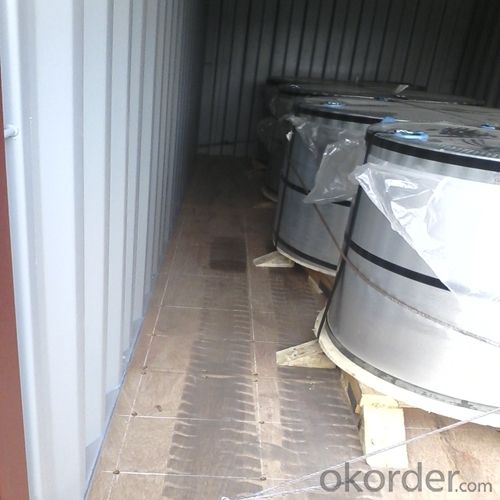
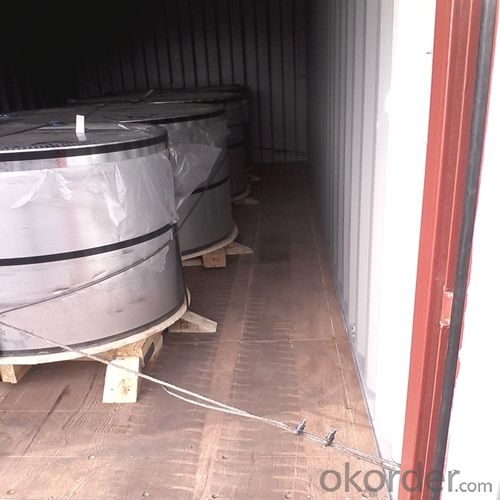
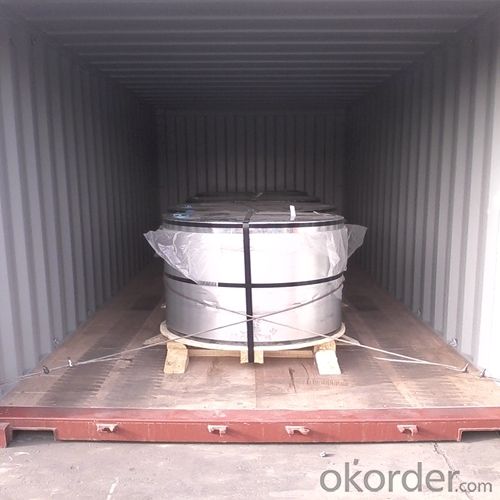
4.Electrolytic Tinplate with MR Steel Material Specification
Standard: ISO 11949 -1995
Material: MR
Thickness:0.175mm
Width: 600mm
Temper: T4
Annealing:CA
Coil Inner Diameter: 508mm
Weight: 6-10 tons/coil 1~1.7 tons/sheets bundle
Passivation:311
Oil: DOS
Surface: Finish
5.FAQ of Electrolytic Tinplate with MR Steel Material
1. What is the delivery time for your prime quality tinplate?
Usually 35 days after order confirmation.
2. What is your Minimum Order Quantity?
Usually MOQ is 50tons for one single size, for trial order, it can be 25 tons.
3. What is the payment term?
The most common we use is L/C at sight or TT. We can also try use other terms.
- Q: How does tinplate packaging contribute to product protection against leakage?
- Tinplate packaging contributes to product protection against leakage primarily due to its durable and corrosion-resistant properties. The tin coating on the steel substrate prevents any contact between the product and the surrounding environment, minimizing the risk of leakage. Additionally, tinplate packaging is often manufactured using advanced sealing techniques, ensuring airtight and leak-proof closures. Overall, the robust nature of tinplate packaging serves as a reliable barrier, safeguarding the product from potential leakage and preserving its quality.
- Q: How does tinplate compare to stainless steel in terms of properties and applications?
- Tinplate and stainless steel differ significantly in terms of properties and applications. Tinplate, made by coating thin steel sheets with a layer of tin, offers good corrosion resistance and malleability, making it suitable for applications like food and beverage packaging, cans, and aerosol containers. On the other hand, stainless steel, an alloy of steel with chromium and other elements, provides superior corrosion resistance, strength, and heat resistance. It finds extensive use in industries like construction, automotive, kitchenware, and medical equipment. While tinplate is more cost-effective and suitable for lightweight applications, stainless steel offers higher durability and versatility for various demanding applications.
- Q: What are the main applications of tinplate in the agricultural industry?
- Tinplate is commonly used in the agricultural industry for the production of cans and containers to store and preserve agricultural products such as fruits, vegetables, and dairy products. It provides a protective barrier against moisture, oxygen, and light, ensuring the quality and freshness of the stored items. Additionally, tinplate is also utilized for packaging agricultural chemicals and fertilizers, as it offers resistance to corrosion and acts as a reliable barrier against chemical reactions.
- Q: How does tinplate handle exposure to different atmospheric conditions?
- Tinplate is known for its excellent resistance to atmospheric conditions. It can withstand exposure to various weather conditions, including high humidity, extreme temperatures, and even corrosive environments. The tin coating on the steel substrate acts as a protective barrier, preventing oxidation and corrosion, which helps in maintaining the integrity and durability of the tinplate. Overall, tinplate demonstrates superior performance when exposed to different atmospheric conditions.
- Q: What are the main applications of tinplate in the paint industry?
- Tinplate is commonly used in the paint industry for packaging purposes. It is primarily used for manufacturing paint cans, which provide a durable and protective container for storing paint products. Tinplate cans also offer excellent resistance to corrosion and airtight sealing, ensuring the longevity and quality of the paint. Additionally, tinplate cans are easy to handle, stack, and transport, making them a convenient choice for the paint industry.
- Q: Can tinplate be used for electrical components?
- Yes, tinplate can be used for electrical components. Tinplate is a thin sheet of steel coated with a layer of tin, which provides corrosion resistance and electrical conductivity. It is commonly used in the manufacturing of electrical components such as cans, connectors, and terminals.
- Q: What are the different thickness options for tinplate?
- The different thickness options for tinplate typically range from 0.13mm (0.005 inches) to 0.49mm (0.019 inches), depending on the specific requirements of the application.
- Q: How does tinplate perform in terms of odor resistance?
- Tinplate performs well in terms of odor resistance due to its non-reactive and impermeable nature, which prevents the absorption and transmission of odors.
- Q: What are the different methods of disposing of tinplate packaging?
- Some of the different methods of disposing of tinplate packaging include recycling, reusing, and landfill disposal. Recycling involves separating the tinplate from other materials and sending it to recycling facilities to be processed into new products. Reusing tinplate packaging can involve repurposing it for storage or other purposes. If recycling or reusing is not possible, tinplate packaging can be disposed of in landfills, although this should be the last resort as it contributes to waste accumulation.
- Q: Can tinplate be used for high-temperature applications?
- No, tinplate is not suitable for high-temperature applications as it has a low melting point.
Send your message to us
Electrolytic Tinplate with MR Steel Material
- Loading Port:
- Qingdao
- Payment Terms:
- TT OR LC
- Min Order Qty:
- 25 m.t.
- Supply Capability:
- 30000 m.t./month
OKorder Service Pledge
OKorder Financial Service
Similar products
Hot products
Hot Searches
Related keywords
